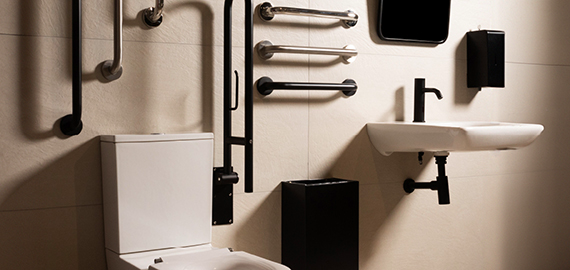Bathrooms are one of the most commonly used spaces in any household. And within bathrooms, showers are an essential component that serves a crucial purpose – providing a quick and refreshing way to start or end your day. However, with regular use comes certain challenges that can make showering less enjoyable and even frustrating at times. In this article, we will discuss some common bathroom shower challenges and their solutions.
Limited Space:
Limited space is one of the most common challenges in bathroom showers, particularly in smaller bathrooms or older homes with compact layouts. This can make it difficult to design a bathroom shower that is both functional and aesthetically pleasing.
Solution: Optimize space by choosing space-saving fixtures and accessories, such as corner showers, sliding glass doors, and wall-mounted storage shelves. Consider removing non-essential items and decluttering the shower area to create a more open and spacious feel. Additionally, choose light colors and reflective surfaces to visually expand the space and make it feel larger.
Mold and mildew growth:
Mold and mildew thrive in moist environments like bathroom showers, leading to unsightly stains, unpleasant odors, and health hazards. Controlling mold and mildew growth is essential for maintaining a clean and hygienic shower environment.
Solution: Prevent mold and mildew growth by promoting proper ventilation and airflow in the shower area. Install an exhaust fan or open windows to allow moisture to escape after showering. Clean the shower regularly with a mildew-resistant cleaner and scrub brush to remove any existing mold and mildew buildup. Consider using a shower curtain or door with anti-microbial properties to inhibit mold and mildew growth.
Water pressure issues:
Low water pressure can detract from the showering experience, resulting in weak or inconsistent water flow. Water pressure issues may be caused by clogged showerheads, plumbing problems, or insufficient water supply.
Solution: Start by cleaning the showerhead to remove any mineral deposits or debris that may be restricting water flow. If cleaning the showerhead doesn’t improve water pressure, check for plumbing leaks or obstructions in the water supply line. Consider installing a water pressure booster or upgrading to a high-pressure showerhead to improve water flow and enhance the showering experience.
Slippery surfaces:
Slippery surfaces in the shower can pose a safety hazard, particularly for older adults, children, and individuals with mobility issues. Preventing slips and falls is essential for maintaining a safe and accessible shower environment.
Solution: Install non-slip flooring, such as textured tiles or adhesive anti-slip mats, to provide traction and reduce the risk of falls. Consider adding grab bars or handrails for added stability and support, particularly near the entrance and inside the shower. Use bath rugs or mats with non-skid backing outside the shower to absorb water and prevent slipping on wet floors.
